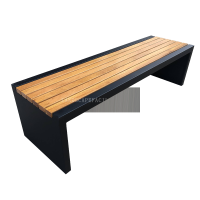Welcome to the website for landscape facilities products and knowledge.
How does the trash can’s design ensure compatibility with automated lifting mechanisms?
The integration of automated lifting mechanisms in waste management systems has revolutionized efficiency, but its success heavily relies on the design of the trash cans themselves. Here’s how modern trash can designs ensure seamless compatibility with these advanced systems:
1. Standardized Dimensions: Trash cans are built to precise measurements, ensuring they fit securely into automated lifting arms or forks. Uniformity in width, height, and depth prevents misalignment during lifting.
2. Reinforced Structural Integrity: Heavy-duty materials like high-density polyethylene (HDPE) or steel are used to withstand the stress of mechanical lifting. Reinforced rims and bases prevent deformation under load.
3. Integrated Lifting Points: Many designs feature built-in handles, grooves, or slots that align with the lifting mechanism’s claws or hooks, ensuring a firm grip and stable transport.
4. Weight Distribution Optimization: Balanced weight distribution prevents tipping during lifting, while tapered designs allow for easy insertion and removal from compactors or trucks.
5. Durability for Repeated Use: Coatings or textures resistant to abrasion and corrosion extend the lifespan of trash cans, even with frequent mechanical handling.
By addressing these key factors, trash can designs not only enhance compatibility with automated systems but also improve safety, reduce operational downtime, and streamline waste collection processes.
Related search:

Recommendation
Modern Stainless Steel Begonia Wood Park Chair Outdoor Courtyard Leisure Sun Protection Bench Long Seat